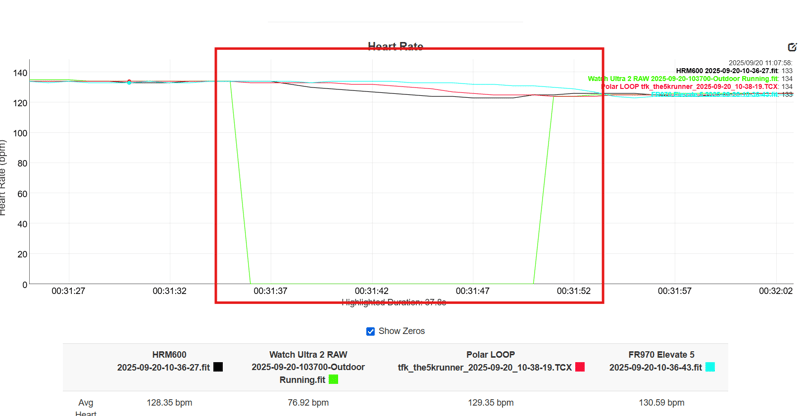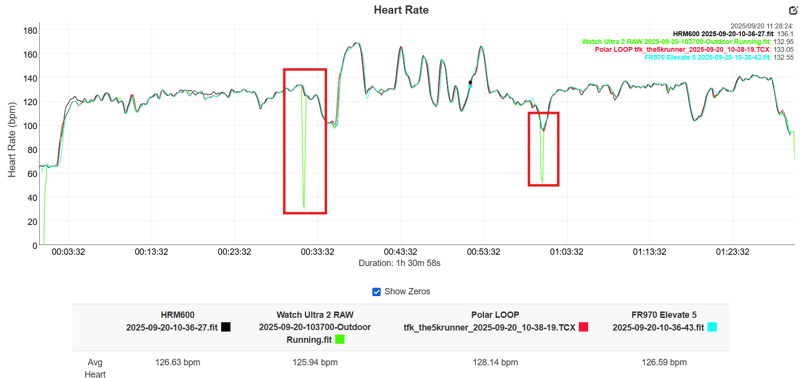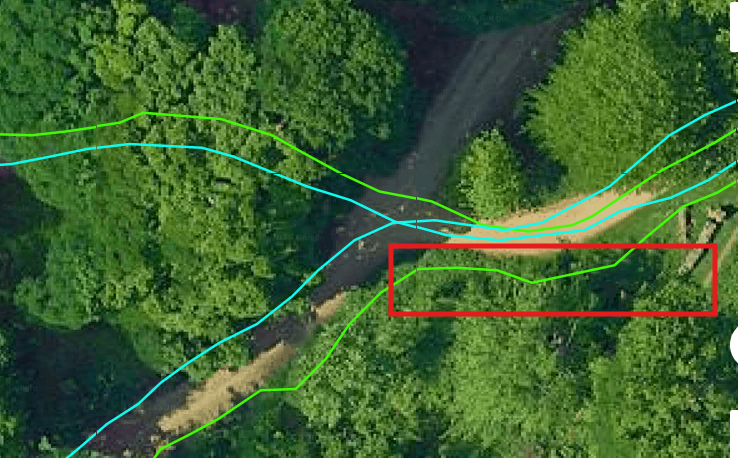 Apple Watch Ultra 3 – Raw Data Accuracy – Is it better than Apple’s Workout app?
Apple Watch Ultra 3 – Raw Data Accuracy – Is it better than Apple’s Workout app?
Apple smooths over some of the imperfections when creating workout tracks.
If you look at your completed route, the corners sometimes might seem to be gracefully curved when you know you took a sharp 90-degree turn. Similarly, the plausible heart rate tracks you see might be cleverly tweaked to cover dropouts. This was a pronounced issue with early Apple Watches, less so as the series progressed.
What does the raw data really look like?
I’ve put some info below from one run today, and I’ll post a more comprehensive review in a few weeks covering other sports scenarios. I’m unsure if showing the raw data in a more detailed review makes sense, as that is not what 99.9% of people will see.
Heart Rate
You can see two dips in the Watch Ultra 2’s raw data track here.
What’s happening is that Apple is losing all heart rate data for about 14 seconds, but the main chart shows a 20-second moving average, so the dropout looks like a dip. Had I used the Apple Workout app, I suspect there would be no dip or dropout. From that I would infer that dropouts are filled in,
Putting the dropouts aside, the rest of the HR data is excellent, both from the Watch Ultra 3 and the new Polar LOOP. The data is compared to a Garmin HRM 600 strap and a Garmin Elevate 5 optical sensor.
GNSS / GPS
One of the benefits of every Watch Ultra is that it uses a dual-frequency (L1+L5) GNSS chipset. The Watch 10/Watch 11 is less accurate and does not use dual frequency, but other watches do, like the Garmin Forerunner 970 on show in today’s tests.
What is dual frequency GNSS aka multi-band GPS and why is it so accurate
GNSS chipset accuracy has advanced by a leap since dual frequency was first used. The first were from Sony, followed by Airoha and Synaptics. These are notably more accurate than the technologies that came before them. For the first time, I started to call some of their GPS tracks ‘accurate’. Garmin appears to have changed a second time to a higher-tier dual-frequency chipset, changing suppliers from Airoha to Synaptics. Synaptics are the most accurate—only a bit, but more accurate nonetheless.
Garmin changes GPS chips to synaptics – why? and what does this mean going forward?
I suspect Watch Ultra 3 has the same dual-frequency chipset as in the first series (Ultra One). Apple Watch usually uses the highest quality method to obtain GPS points; however, its Workout App uniquely applies post-processin,g which does two thing.s
- It smooths the track
- It considers the accuracy of every position by looking at the next position. Presumably, it then discards positions it considers to be inaccurate.
As you can see on these charts, Watch Ultra’s raw data doesn’t quite follow the paths and tracks, whereas FR970 does (I usually use 3 watches to prove the point, but I ran on the tracks today, so the discrepancy is apparent).
These differences are perhaps irrelevant to speed and distance calculations, which will be accurate enough for most people.
It’s also worth noting that when assessing GPS accuracy, it’s often best to show tracks overlain on a satellite image rather than a man-made map. The latter generally gets roads and paths right but can mess up when following tracks under trees and other scenarios. Satellite images are also harder to read, of course.
You might want to query other reviewers’ methods (dcrainmaker has also written about this topic).
Take Out
Apple’s raw data glosses over the occasional imperfection. The resulting charts and tracks look better, and 99.5% of us will never realise, notice or care.








